Day 14 :
- Plenary Sessions
Location:
Session Introduction
Marina L Gavrilova
Full Professor, University of Calgary, Canada
Title: Machine Learning in KINECT Image Processing for Biometric and Medical Applications
Time : 10:00-10:45
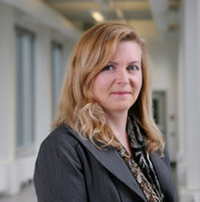
Biography:
Marina L. Gavrilova is a Professor in the Department of Computer Science, University of Calgary, a Head of the Biometric Technologies Laboratory and a Board Member of ISPIA. Her publications include over 300 journal and conference papers, edited special issues, books and book chapters in the areas of image processing, machine learning, biometric and online security. She has founded an international conference series with LNCS/IEEE, co-chaired a number of top international conferences, and is Founding Editor-in-Chief of LNCS Transactions on Computational Science Journal. She is on the Editorial Boards of the Visual Computer, International Journal of Biometrics, and six other journals. She has given over 50 invited lectures and tutorials at major scientific gatherings and industry research centers, including Stanford University, SERIAS Center at Purdue University, Microsoft Research USA, Oxford University UK, Samsung Research South Korea, and others. She has a number of awards, professional designations and media apeparances.
Abstract:
Rapid development of machine learning methods opened the door to a new class of fast and reliable identity management solutions, and forever changed the research landscape. One of the applications where benefits of using machine learning methods are on the full display is in image and video processing. This invited lecture will discuss recent trends, state-of-the-art methods and applications of machine learning in security and medicine. Traditional definition of biometric security research is recognizing someone’s identity from collected biometric data, which includes physiological, behavioural, soft, or social traits. Physiological features can be often collected visually (facial image, ear, iris etc) or through some specialized devices, such as infrared sensors, remote temperature measuring devices, and so on. Behavioural characteristic include the way a person walks (gait), the way person talks (voice), the way person writes (typing patters, keystroke pressure) etc. Soft biometrics include easily collected but not so unique data, i.e. age, gender, height, weight etc. Area where the development of new technologies can have a very tangible effect on society is security and medicine. It is generating a lot of interest and getting traction in biometric research, as well as in related fields looking into human interaction, physiological studies, user profiling, pattern recognition, authorship identification and collective intelligence. This lecture outlines one of the first studies that looks at integrating KINECT sensor image and video processing based on a human gait with activity and emotion recognition. Applications and impact on patient physiohterapy rehabilitation through continuous progress tracking and visual data analytics are also discussed.
Networking & Refreshment Break: 10:45-11:00
Awane Jones
CEO of Phenomena, Canada
Title: Entertainment and the future of virtual reality
Time : 11:00-11:45
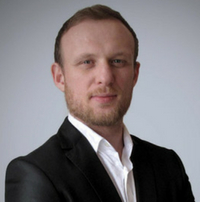
Biography:
Awane Jones is a CEO of Phenomena a technology and creativity company that develops Immersive Adventures. He is the President of Zone3 (VR) and the founder of 'Merchlar', a company that pioneered the Augmented Reality (AR) and Virtual Reality (VR) sector in Canada. A Co-Founder and former partner at 5thWall agency and the Montreal Chapter President of the VR/AR Association. He is also a bilingual keynote speaker and have presented at several international conferences including SXSW, C2, G20, Capital Innovation Défi MTL etc. His award-winning agencies, have built immersive experiences for a number of high profile global brands such as Universal Pictures & Twitter. Considered a thought leader in the field of AR & VR, he writes a technology blog on Huffington Post.
Abstract:
We’re witnessing the dawn of a new era in media. Soon, virtual/augmented/mixed reality technologies will reshape how we interact with content and each other. Today, however, these emerging technologies are characterized by solitary, in-home experiences for early adopters. To become truly meaningful, VR must get out of the basement and into the streets.
In this talk, as pioneer in the field AR&VR will be speaking on Location Based Entertainment and the future of these technologies.
- Sessions: Computer Graphics | Computer Animation | Animation Industry | Modeling | Simulation | Game Design & Development | Gamification and Social Game Mechanics

Chair
David Xu
Regent University, USA
Session Introduction
Colin Brown
Computer Vision Scientist, Wrnch Inc., Canada
Title: Using AI to create frictionless motion capture
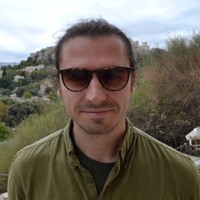
Biography:
Colin Brown is a Computer Vision Scientist at Wrnch Inc., Montreal working on deep learning models for activity recognition. He completed PhD in the Medical Image Analysis Lab at Simon Fraser University, where his research focus was on methods to extract salient information from diffusion tensor images of the brain. Combining creative and analytical thought to make something new excites him. Broadly, his interests lie in image analysis, computer vision, machine learning, video games, rendering, and game design.
Abstract:
Motion Capture has revolutionized computer graphics by making 3D animation incredibly lifelike. Notwithstanding this enormous success, the prohibitly high set up and operating costs of traditional motion capture techniques limits its use only the largest 3D content creators. In this talk, we describe how deep learning can overcome these barriers and turn any cell phone camera into a production-ready motion capture system.
David Xu
Professor, Regent University, USA
Title: How to use maya dynamic hair system to model realistic hairstyles
Time : 12:00-12:35
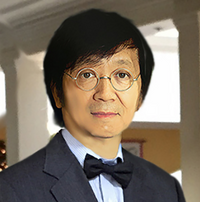
Biography:
Abstract:
Gregory Ducatel
Global Head of Software, Mill Film, Montreal, Canada
Title: Improvement on top of Pixar USD
Time : 12:35-13:10
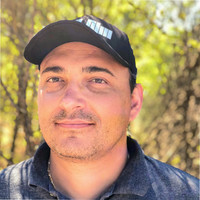
Biography:
Gregory Ducatel is Global Head of Software at Mill Film in Montreal, Canada. His excellent knowledge and understanding of processes to reduce the technical debt of the company to increase the value outputted by the team. He has worked or participated in many projects like Assassin's Creed, The Revenant, X-Men: Apocalypse, Independence Day 2, Civilization Beyond Earth, Mortal Kombat X, The Grey, Clash of the Titans, Red Cliff, The Day the Earth Stood Still, Laundry Warrior, Public Enemies, Mirror Mirror.
Abstract:
We will demonstrate the improvements made on top of Pixar USD and the Hydra render engine (including Optix from Nvidia) to support a VFX pipeline.
Lunch 13:10-14:00 @ Foyer
Irving Cruz-MatÃas
Professor, University of Monterrey, Mexico
Title: Characterization of pore space using a non-Hierarchical Decomposition Model
Time : 14:00-14:35

Biography:
Irving A. Cruz-Matías is full time professor in the Computer Science Department at University of Monterrey, Mexico. He received the Ph.D. in Computing from the Polytechnic University of Catalonia, Barcelona, Spain in 2014. His research interests include modelling, analysis and visualization of 3D biomedical samples, digital image processing and in general, the application of computer graphics in the bioengineering field.
Abstract:
Bio-CAD and in-silico experimentation are getting a growing interest in biomedical applications, where scientific data coming from images of real samples are used to evaluate physical properties. In this sense, analyzing the pore-size distribution is a demanding task to help to interpret the characteristics of porous materials by partitioning it into its constituent pores. Pores are defined intuitively as local openings that can be interconnected by narrow apertures called throats that control a non-wetting phase invasion in a physical method. There are several approaches to characterize the pore space in terms of its constituent pores, several of them requiring prior computation of a skeleton. This paper presents a new approach to characterize the pore space, in terms of a pore-size distribution, which does not require the skeleton computation. Throats are identified using a new decomposition model that performs a 2D spatial partition of the object in a non-hierarchical sweep-based way consisting of a set of disjoint boxes. This approach enables the characterization of the pore space in terms of a pore-size distribution.
Xupu Geng, Tian Li
Senior Engineer, Xiamen University, China
Title: Stylistic mixture of Monet and Chinese ink painting by deep learning
Time : 14:35-15:10
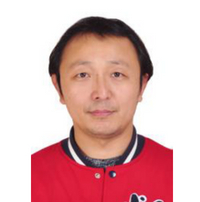
Biography:
Xupu Geng is Senior Engineer in State Key Laboratory of Marine Environmental Science, Xiamen University, China. His research interests are in the area of deep learning and its application in image processing.
Abstract:
Image style transfer is a classical problem in computer graphics and vision. As the palmy development of deep learning in recent years, Generative Adversarial Networks (GAN) and its variations like CycleGAN have been proposed to generate or transform images. Monet and Chinese Ink are two influential art styles in landscape painting. They have some likeness in impressionism, but concerning color and depth of focus, they are so different. Here we try to mix the two styles to create a new kind of artwork by CycleGAN. In fact the proposed method in this paper has many potential applications in artisitic creation.
Tian Li
Assistant Professor, Xiamen University, China
Title: Perception: Being art in virtual reality
Time : 15:10-15:45
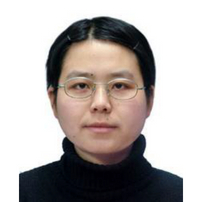
Biography:
Tian Li is Assistant Professor in College of Humanity, Xiamen University, China. Her research interests are in the area of virtual reality and new media art. Now she is focusing on the art theory of virtual reality, augmented and mixed reality.
Abstract:
With virtual reality (VR) technology, artwork becomes a process rather than a definite object, the perception of receiver could be the process of Art, and has been of unprecedented importance in art creation. It is VR that really gives receiver an identity of “creator”, and the completion of VR art becomes inseparably bound to perception of receiver, in so far, it could be woven as strands into an activity that calls the VR artwork into play. It is only through the process of receiver’s perception that the artwork could enter into its changing visions. During the whole process, perception of receiver may be everywhere, and VR becomes a psychological state to describe the perception of receiver happened in the process of art reception. On one side, full body immersive in VR broaden the esthetic perception in artwork, but on the other side, there will be lack of emotion and thought in some degree, so the conflict between full body immersion and imagination remains to be mediated in present VR art.
Networking & Refreshment Break: 15:45-16:00
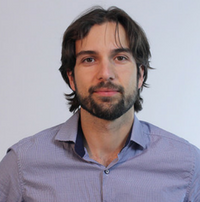
Biography:
David Fugere-Lamarre is a Co-founder and CEO of iLLOGIKA, an industry veteran who started his career many years ago as a programmer. Entrepreneurship is a family passion, he founded his studio, and iLLOGIKA is now one of the main actors of the Montreal indie community. He is a computer engineer, graduated from École polytechnique de Montréal. He also holds a master's degree in engineering project management. He is a ten-year veteran in the interactive gaming and development industry, having worked for companies such as Phoenix Interactive, Behavior Interactive, and Illogika. He is a specialist of Unity and teaches this technology in schools specialized in the field of the game and within companies.
Abstract:
FLICKBLOCKS:
FlickBlocks mixes classic gameplay with VR to create an experimental game that’s high intensity action and strategy. This game prototype emerged from our research and development initiative and has been produced in 3 weeks. The prototype is now published on itch.io for all to enjoy. Its category of Games, Research & Development, Virtual reality, and platforms is HTC Vive and Oculus Rift.
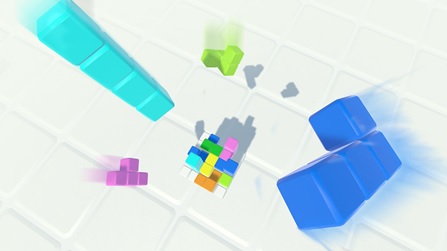 Figure 1
Figure 1
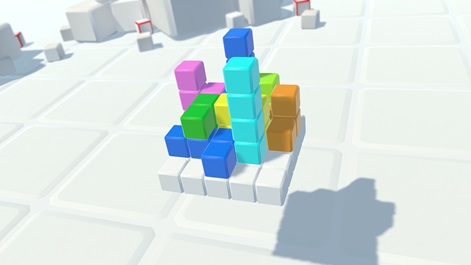 Figure 2
Figure 2
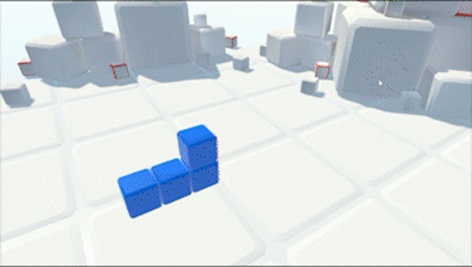 Figure 3
Figure 3
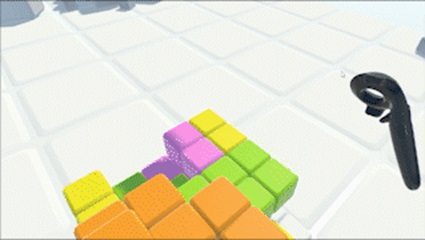 Figure 4
Figure 4
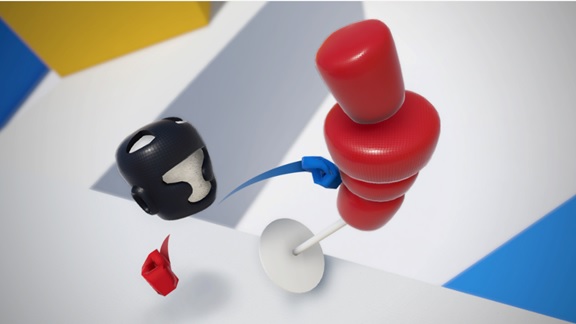 Figure 1: Airpunch
Figure 1: Airpunch
AIRPUNCH:
Air Punch is an innovative VR demo exploring a new locomotion technique using punches we call Punch Dash ! Produced in between 4 to 5 weeks, the game is now published on itch.io for all to enjoy. Air Punch is above all a prototype, created for R&D purposes. ts category of Games, Research & Development, Virtual reality, and platforms is HTC Vive and Oculus Rift.
iLLOGIKA has developed externally games for UbiSoft, SquareEnix and Disney. More recently they have been focusing on AR/VR R&D and have developed a series of tools that are pushing the midddleware and hardware solutions that are currently available. They are interested in sharing the methodology, challenges and results they have achieved while developing VR specific animation pipelines, texturing and destruction tools.
Stefan Doychev
Lead Technical Developer, Hack and Paint & Co-Founder,BG Imane, Bulgaria
Title: Designing games in virtual reality: Introduction and basic concepts
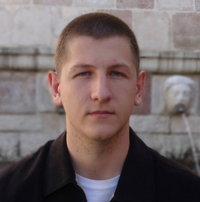
Biography:
Stefan Doychev is Lead Technical Developer at Hack and Paint & Co-Founder of BG Imane from Bulgaria, also a passionate Game Developer and a game jam veteran. Despite his internal battle between developing applications for the biggest OS today - Android, which he embraced back in 2011, and his never-ending desire to create the next 'big thing' in the game industry, he is always ready to play with some new tech gadgets. When not behind his favourite PC, he could be found chasing the ball at the rugby field - he is currently President of the Murphy's Misfits RFC.
Abstract:
Statement of the Problem: The traditional game design rules and guidelines do not work when creating content for the Virtual Reality platform. Due to the limitations of the hardware, some specifics of the new platform (the image resolution, the weight of the equipment) and immaturity of the current game design and development tools, the developers face a new type of problems and challenges when have to create content for the Virtual reality platform. Another very common problem experienced from both users and developers of which especially the second have to be very aware of and try to limit it as much as possible is the feeling of dizziness (sickly side effects) after several minutes of play time, also known as vection – several solutions to this problem will be addressed and proposed in the presentation.
The importance of the sound effects and the user interface and general user experience are crucial for a deep, satisfactory and engaging interaction with the modern VR headsets. Combined with the need for a stable and permanent frame rate above 90 frames per second this creates the need for a multidisciplinary team made up of great professionals when a VR game is being developed.
In the presentation will be discussed different approaches when a new Virtual Reality game is being designed and developed, some example solutions of the problems listed above will be proposed and real-life examples will be proposed. Those examples are based on the development of the SUNWALKER VR award-winning game (Winner of the Best In Play award at the Game Developers Conference 2018). The purpose of this presentation is to raise awareness and explain what to expect when entering the world of game development in Virtual Reality and the explanations will be backed up with examples from actual solutions that occurred during the development life in Hack and Paint – a distributed VR game studio.
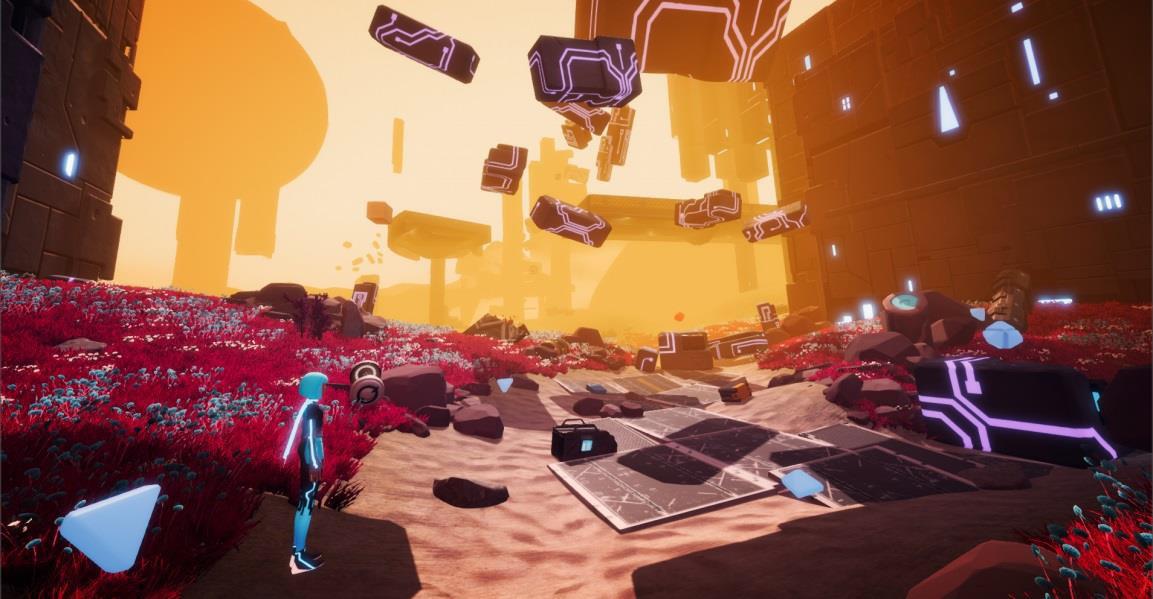 Image 1: A screnshot from the beautilful world in SUNWALKER - an award-winning VR game
Image 1: A screnshot from the beautilful world in SUNWALKER - an award-winning VR game
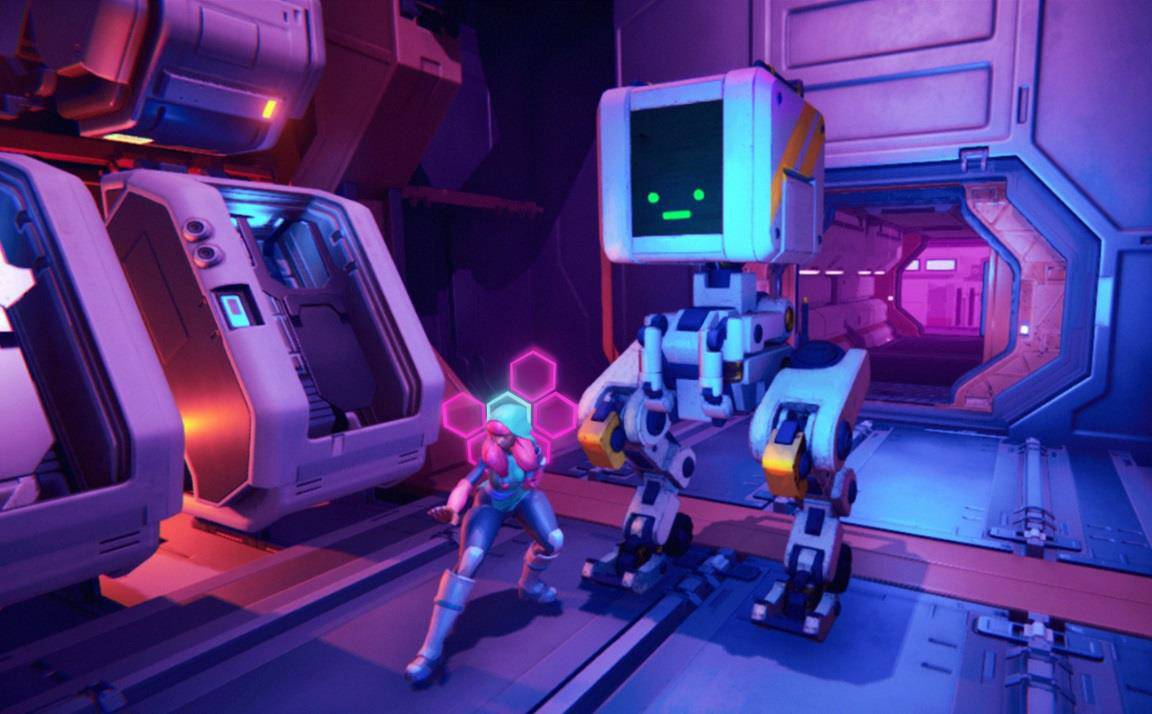 Image 2: A screnshot from the SUNWALKER and the main protagonists in the game
Image 2: A screnshot from the SUNWALKER and the main protagonists in the game

Biography:
Derek Ng-Cummings is the Animation Director at Kabam, Canada. He is responsible for collaborating with multi-faceted teams of designers, artists, and programmers to develop compelling mobile, free-to-play games for Kabam. He determines artistic animation style and technical requirements to ensure seamless integrations with the outputs of designers and programmers, animators, technical artists, effects artists. He takes on a leadership role at Kabam, through coaching and advising teams by providing continuous reviews and constructive feedback on game builds. As the Animation Director, he implements pipelines for animation production and game prototyping. He is passionate about growing and building internal teams in the creative departments. Some of his’s most notable work at Kabam includes the development of Marvel and Transformers games by pushing the visual bar for animation in the mobile market.
Prior to Kabam, he worked at Electronic Arts on game titles such as NBA JAM, Fight Night 4, and NHL. He has also held positions at Bright Light Studios, MainFrame Entertainment and the National Film Board and has over 18 years of animation experience. He received his education at the University of Manitoba and Red River College.
Abstract:
- Exploring animation technology and how it has changed the way we view the animation in our day to day life in entertainment.
- How technology has changed the animation process when developing for film, tv, and games.
- Why Technology has turned animation from a fine art to anyone can do it if they have the right tools.
- What I’ve done to embrace technology to raise the bar when creating animation for mobile games.
- How the advancement animation technology has helped other industries like; medical science, and educational learning.
The advancement of animation technology has changed the way animators who were once true fine arts to a new world of possibilities. Creating stunning animated films to raising the visual bar for games and helping other industries to solve problems in the world, together we will explore these advancements and how I’ve come to embrace this like so many others.
Sicilia Ferreira Ponce Pasini Judice
Faculty of Technical Education of the State of Rio de Janeiro, Brazil
Title: Reaching the impossible - Tales of a computer graphics teacher
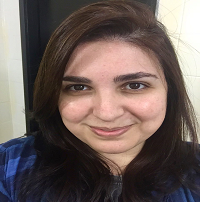
Biography:
I teach computer graphics since 2009 in a public faculty of the State of Rio de Janeiro, in Brazil. Specifically in a beautiful city called Petrópolis. This faculty offers only one course called Training in Information and Communication Technology, with 3 years of duration, divided into 6 periods. My discipline of Introduction of Computer Graphics occurs in the 4th period, where normally, students are worried about getting a job or retaining the job they already have. In Brazil we don’t have manny opportunities in jobs with computer graphics. In fact, this market has been growing in recent decades, but the opportunities are few. In this way, my discipline is not that attractive as I would like it to be. In this session I'm going to talk about how computer graphics have motivated students to improve their programming skills, even though they are not interested in it. Furthermore, I'm going to present some success stories from students who are effectively working with computer graphics, one of them in Australia.
Abstract:
I teach computer graphics since 2009 in a public faculty of the State of Rio de Janeiro, in Brazil. Specifically in a beautiful city called Petrópolis. This faculty offers only one course called Training in Information and Communication Technology, with 3 years of duration, divided into 6 periods. My discipline of Introduction of Computer Graphics occurs in the 4th period, where normally, students are worried about getting a job or retaining the job they already have. In Brazil we don’t have manny opportunities in jobs with computer graphics. In fact, this market has been growing in recent decades, but the opportunities are few. In this way, my discipline is not that attractive as I would like it to be.
In this session I'm going to talk about how computer graphics have motivated students to improve their programming skills, even though they are not interested in it. Furthermore, I'm going to present some success stories from students who are effectively working with computer graphics, one of them in Australia.
Khor Kheng-Kia
Universiti Tunku Abdul Rahman, Malaysia
Title: Hybridity of computer graphics and traditional performing art: A case study on Malaysian Shadow Play

Biography:
Assistant Professor Dr. Khor Kheng-Kia has his expertise in computer graphics and passion in preserving traditional performing arts via digital technologies. His main interest fells between the convergence of computer technologies and traditional art. He has published more than half a dozen of journal articles on topics related to Malaysian shadow play and the use of digital technologies to capture and/ or preserve the art of this art form. He is currently working as assistant professor cum deputy dean (academic development & undergraduate programme) of Faculty of Arts and Social Science, Universiti Tunku Abdul Rahman, Malaysia. As a panel assessor of Malaysian Qualifications Agency (MQA), he also has more than a decade of academic experience in teaching arts and design subjects as well as developing educational/ training materials.
Abstract:
With the advent of 4th Industrial Revolution, many traditional performing arts and games are facing severe competitions from the ones in digital forms and media. Most of the youngsters today are widely and highly exposed to the ubiquitous and proliferate online/ mobile games inundated with stunning and delectable Computer-Graphics (CG). Therefore their interest towards traditional performing arts are evanescent. This global phenomenon is threatening the survival of traditional performing arts in many developing countries.
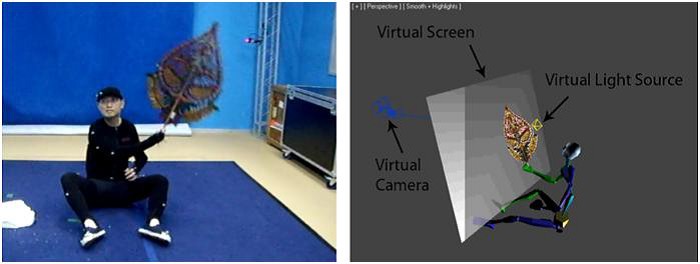 Figure 1: A Motion Capture Experiment Related to Malaysian Shadow Play (image courtesy of the author)
Figure 1: A Motion Capture Experiment Related to Malaysian Shadow Play (image courtesy of the author)
In Malaysia, almost all traditional performing arts and games are receiving lukewarm interest from the local youngsters and thus many of them have either extinct or unlikely to last long. This include wayang kulit Kelantan which can be perceived as a national shadow play with high-standard of cultural and artistic values.
McLuhan’s theory asserted that technology innovations are merely enhancements or extensions of ourselves and people will use them to enhance their current activities, practices and values. Since 2006, the author has been studying on the application of Computer Graphics (CG) in capturing, simulating, preserving, conserving and reviving the arts and visual of traditional wayang kulit Kelantan.
Key-frame animation, motion capture, procedural animation techniques, just to name a few, have been explored and applied by the author in many experiments related to wayang kulit Kelantan. In addition to that, a methodological framework has also been introduced in 2016 to suggest the best possible outcomes for digitalization of wayang kulit Kelantan. Here, the author would like to share with the CG adepts from all parts of the World on my decade of research related to the convergence of traditional shadow play and emerging CG techniques.
Ma. Corazon G. Fernando
FEU Institute of Technology, Philippines
Title: Journey to liberty: Museum of Philippine political history virtual tour
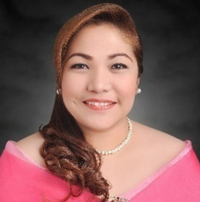
Biography:
Ma. Corazon G. Fernando is an alumnus of Polytechnic University of the Philippines with a Master’s Degree in Information Technology and currently pursuing her doctorate degree in Technological Management in Technology University of the Philippines. She has been handling Information Technology subjects for the the last 10 years and currently a full-time faculty member of the College of Computer Studies at FEU Institute of Technology. She also engage in various IT research and her oral presentation accepted in ICCIP 2017 Japan. Perivous research paper presented in IEEE Region 10 Conference (TENCON 2016) Singapore, IEEE Region 10 Symposium (TENSYMP) Indonesia, and IEEE TENCON 2015 China. She is also a member of several organization such as American Society for Research (ASR), and International Association of Computer Science and Information Technology (IACSIT).
Abstract:
The project is primarily focused to the Virtual Tour for the Museum of Philippine Political History. Virtual Tour was chosen as a promotional tool because it is one of the contemporary media today. The tour will showcase each of the station and artifacts that is present there, it will have 360° audio-visual presentation and 360° free-roam tour. The audio-visual presentation will have narration for each station inside the museum, the free-roam tour you can interact with the artifacts inside of each station present in the museum.
The project’s goal and advocacy are to provide an innovative experience and knowledge about the state of the country’s political state throughout the years while it provides promotion to the museum and information about it. The promotion doesn’t only aim for the museum but also for the political history so that the community would understand its importance and significance.
The virtual tour will be present in their government website, Facebook page, and promotional website.
- Sessions: Computer Vision & Pattern Recognition | Imaging and Image Processing | Visualization & 3D Printing | Human-Computer Interaction | 3D Web Technology

Chair
Marina L Gavrilova
University of Calgary, Canada
Session Introduction
Evgeny Rodygin, Roman Sementsov
Graphics Developer, Artec3D, Russian Federation
Title: Realtime processing of huge 3D data in web browsers
Time : 11:45-12:20
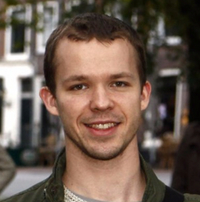
Biography:
Evgeny Rodygin is 3D graphics developer in RnD department at Artec3D Company. His primary interests are 3D graphics, 3D Engines Architecture and Artificial Intelligence. For almost five years he was developing a complex WebGL environment called Blend4Web and now he works on a web-based geometry-editing application for 3D scanned data.
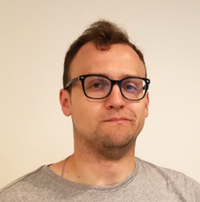 Roman Sementsov
Roman Sementsov
Roman Sementsov is 3D graphics developer in RnD department at Artec3D. He has special interest in digital mesh processing algorithms. Roman also has experience in writing complex shaders, rendering engines, and lighting systems.
Abstract:
Realtime 3D mesh editing is a very computational heavy task in terms of both processing speed and memory consumption, especially if we speak about scanned geometry consisting of tens or even hundreds of millions of polygons. In order to move, delete and add vertices complex optimizing structures become a vital requirement. Not so long ago it has become possible to manipulate such data on desktop computers and this talk seeks to expand these boundaries even further and proposes approches to editing such data in web browsers which have made significant steps to improve stability and performance in recent years. The proposed methods combine the use of modern frontend API, server-side data preparation and computationally efficient algorithms for mesh processing
- Video Presentation
Session Introduction
David Wortley
Founder and CEO of 360in360 Immersive Experiences, UK
Title: Opportunities and challenges of 360-degree imaging technologies and immersive education
Time : 12:20-13:00

Biography:
David Wortley is an Founder and CEO of 360in360 Immersive Experiences, Futurologist, Keynote Speaker, Entrepreneur, Writer, Entertainer, Gamification Guru, 360 Video Pioneer, Thought Leader, Drone Pilot, Business Coach, Mentor, Facilitator, Early Adopter, Broadcaster, Photographer, Visionary, Philosopher, Pragmatist, Innovator, Optimist - these are the amongst the many roles and attributes he has experience of and passion for. He is the CEO and Founder of GAETSS (www.gaetss.com), a consultancy on the strategic use of Gamification and Enabling Technologies for the transformation of business and society. He is a recognised authority on the practical application of gamification and enabling technologies to address global challenges in areas such as health, environment and education. He is a serial technology innovator and has been a pioneer of emerging technologies for over 30 years. He is an expert advisor to the European Union and an accredited business mentor. His specialist expertise is in the commercialisation of disruptive digital technologies. He is a passionate user of wearable technologies for health and wellness applications and a Founding Council Member of the International Society for Digital Medicine (www.isdm.org.cn).
Abstract:
The consumerization and growing ubiquity of 360-degree technologies for capturing and publishing immersive images, videos and audio has created a series of disruptive opportunities and challenges for developers of immersive education solutions. This presentation looks at the latest developments in 360-degree and dependent technologies to reflect on the likely implications for the future of computer graphics and animation in education.
Lunch Break: 10:45-11:00 @ Foyer
Fatemeh Alijani
Architect, Zista D.S. Consulting Engineers, Iran
Title: Parametric architecture with software and impact on architectural design process
Time : 13:50-14:20
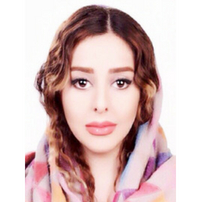
Biography:
Fatemeh Alijani is Architect and Head of Design department of Suha Company, Iran. She worked professionally with Zista Architctur Gurop in the design and 3D modeling of the building. She also Illustration artist worked professionally with number of company and adversting office.
Abstract:
In recent years, the study of exquisite geometry and its innovation has become an important issue in contemporary architecture. At the 21st century that is a new era for architectural design, computer softwares improved this theory of form-finding. The process of architectural design is semi-automatic or automatic. The designs offered to the architect by the softwares help her to find the suitable form. Parametric (component) form-finding uses variables along with a set of rules describing the defects and obstacles in shape and form in order to create three-dimensional shapes based on user data.The advancement of technology has offered creative methods for the design process to find a suitable form for the building. Using 3D design in massive volumes Not only does replace the geometric design process, but it also replaces the early stages of the design process. These methods has become so popular that parametric design can be seen in different areas such as architecture, urban design, and interior design. The ability of these methods in clearly expressing the complexity of the program is more obvious in bigger projects.
In parametric architecture, the building is influenced by both structural aesthetics and the design. In parametric design unlike the high-tech architecture structure is not the main element in architecture. Its technical implementation is compatible with aesthetics and performance Requires the use of appropriate tools .So the thought is raised In the interaction between computer tools and designers in the process of creativity with the help of computer and 3D design and parametric design.
- Young Research Forum
Session Introduction
Nathan Mbambu Kalala
ETS ROUGE-GORGE Services, Democratic Republic of the Congo
Title: Issues and current practices of computer graphics in the Democratic Republic of Congo. What model of learning to make possibilities?
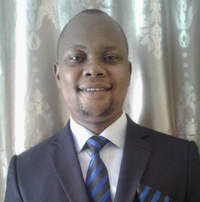
Biography:
Nathan Mbambu Kalala is a Researcher and Teacher in the Higher Computer Institutes from 2016 and also General Manager of ETS ROUGE-GORGE Services at Democratic Republic of the Congo. In 2014-15, completed Technical University Degree (TUD), Artificial Intelligence at ESMICOM, Kinshasa. He was coordinator of the National Program for Popularization of New Technologies of Informatics and Communication in Rural Environments.
Abstract:
Computer Graphics is the field of computer-assisted digital imaging. This discipline takes hold of management, medicine, television, the entertainment industry (video games) and film as well as all scientific disciplines, mathematics, aeronautics, mechanics and all areas of design in general in the world, and, The most common studies go through private schools mostly located in the most developed countries. In our country, computer graphics and animation are more recent and many who enter the profession, are enthusiasts who have made their job; it is their perseverance, documentation and their regular manipulation of computer graphics software sometimes downloaded on the internet, which gradually allowed them to practice. In the current practice, the case of our company, we collaborate closely with other professionals such as artistic director, photographer, screenwriter, architect, printer, webmaster, programmer and communication officer. However, most of these self-trained actors in computer graphics do not achieve the best results that can bring remarkable innovations as happens in developed countries, which creates the need for professional learning as well as the dynamics of regular participation in forums, conferences, conferences on the subject such as this, to facilitate the acquisition of new experiences...
This self-taught practice has huge limitations in many areas, some of which we cite, such as architecture, animated commercials, and locally designed cartoons that do not use 3D:
- In architecture, where 3D modelers are used to prefigure the appearance of a building that is expected to be built, virtual prototyping of 3D objects allows to show a virtual reality tending to represent the object before realization;
- In advertising or cinematic animation films, the power provided by 3D solutions is exploited to the maximum in developed countries by well-educated professionals with up-to-date applications, and this technique is totally unknown in our country.
Thus, computer graphics is certainly a technical approach to computer and image capable of making the possibilities in several fields, but non-professional issues and practices are a brake on innovation; learning in the required standards is a major asset to push the limits of imagination further. However, the efforts of self-taught actors in developing countries are to be encouraged.
Raed Ibraheem Hamed, Twana Latif Mohammed*
University of Human Development, Iraq
Title: Mathematical modeling and simulation method of genes networks by using fuzzy neural approach

Biography:
TBA
Abstract:
The field that develops methods and software tools for understanding biological data is called bioinformatics. The information that characterize the framework's elements should be known keeping in mind this information is frequently robust or even difficult to biological systems.
Here, we exhibit a model of quantitative fuzzy rationale demonstrating approach that can adapt to obscure motor information and hence deliver applicable results despite the fact that dynamic information is fragmented or just dubiously characterized. Fuzzy Petri Nets (FPNs) gives a graphically and scientific system that is good with ineffectively quantitative yet subjectively huge information.
All of Genes Regulatory Networks (GRNs) quests depend on fresh and parametric qualities, in spite of innate Fuzzy nature of quality expression. In the proposed display, a quality expression profile is initially changed into a mapping structure and afterward the changed information is mapped into the fuzzy framework. The models of FPN are characterized in view of creating tenets of information base and the semantics depiction of valid principles are displayed.
Since the relations are spoken to by fuzzy method, the invented strategy is powerful to uproarious and questionable data. FPN to speak to the dynamic information on the base of learning representation with self-learning capacity.
Michael Bhatty
Professor, Mediadesign University of Applied Sciences, Germany
Title: Beyond Mechanics - Directing an integrated gameplay experience

Biography:
You want to create an immersive and challenging game? You already have a set of working game mechanics and ‘just’ need some story wrapped over it? Well, designing game mechanics isn’t enough for the successful development of a game, especially if your game has to convey the narrative component!
In this video presentation we shall analyse the terms gameplay, game mechanics and ‘narratization’ from the point of view of a game director, a concept of the creative-lead position of the game designer allowing a faster and smoother production. Looking at multiple examples from casual to AAA game concepts this session provides an overview on how to synchronize mechanics which the fictional layers to create a whole and integrated experience applying game directing methods.
Abstract:
Michael Bhatty is a Professor for Game Design at the MediaDesign Hochschule in Düsseldorf, Germany. After receiving his doctorate for his dissertation thesis on interactive story telling in 1999 Michael Bhatty became a lead game designer at Ascaron, designing AAA-games (e.g. SACRED, 2004), and was in charge of Phenomedia’s development department as Chief Executive Producer for casual games in 2005/06 (e.g. Moorhuhn Schatzjäger, TinCan Escape). Before and after becoming a professor for game design in 2010 he has also been working as an external game design consultant and novel author (e.g. FarCry, Runes of Magic, Kyle), focusing on the development of fantasy and action experiences.
In his lectures and his research Bhatty focusses on game design and game directing, interactive story telling and historical serious games.
Abhishek Gupta
Founder, Montreal AI Ethics Institute & AI Ethics Researcher, Canada
Title: Ethical AI in Computer Graphics and Computer Vision: How do we balance progress with negative outcomes?
Time : 15:20-15:50

Biography:
Abhishek Gupta is Founder of Montreal AI Ethics Institute and a Prestige Scholar from McGill University with a degree in Computer Science and Economics, he's an AI Ethics researcher and the lead organizer for the Montreal AI Ethics meet-up which is a bi-weekly event where members from the community do a deep dive into technical and non-technical aspects of the ethical development of AI. His current interests include reproducibility and accountability as key pillars in building ethical AI. Most recently, he's written a paper on how large-scale data breaches combined with advances in deep learning techniques will lead to the next generation of identity theft and fraud.
Abstract:
When using AI techniques to build computer graphics applications that have interactions with users in real-world contexts, it is important to eke out biases in the underlying distribution of the dataset. Neglecting to address this can lead to unwanted ethical impacts on the users, furthermore even for applications that are present in contained settings, computer games as an example, generative content from AI techniques can lead to negative consequences in terms of the algorithm picking up biases from the training datasets and exhibiting them. With examples like DeepFakes, the ethical consequences are even more dire when advances in such research can impact the lives of people in a significant manner. In the case of computer vision, the ethical implications are more evident, especially thinking about adversarial examples used to trick self-driving systems which can potentially harm human life.
This talk will illustrate examples where biased datasets and other examples can lead to unethical consequences and propose ideas on how to balance ethics with progress when deploying AI techniques in the field of computer graphics and computer vision.
André Gaudreault
Canada Research Chair in Cinema and Media Studies, Université de Montréal Canada
Title:

Biography:
André Gaudreault, Canada Research Chair in Film and Media Studies (2015-2022), is a Professor at the Department of Art History and Film Studies at the Université de Montréal, Canada. Recognized for his specialization in the fields of early cinema, narratology and editing, He is currently conducting research on historiography and technological innovations. Since 1992, he has founded and directed the Research Group on the Advent and Training of Film and Stage Institutions (GRAFICS), and has participated in the founding of the Center for Intermediality Research (CRI, now CRIalt ) in 1997, two important international infrastructures. He acted as director of the cinematographic film review Cinemasfrom 1999 to 2016. He is also director of the Quebec Cinema Observatory (OCQ, co-founded with Denis Héroux in 2007). He is also Director of the Canadian Section of the International TECES Research Partnership. He is also at the origin of the creation, in 2007 at the University of Montreal, of the first PhD program in film studies offered in Canada.
His research has been crowned on a number of occasions with scholarships, prizes and distinctions, including the coveted 1996 Killam Scholarship (Canada Council for the Arts) and the Jean-Mitry International Prize in 2010. (Giornate del Cinema Muto Festival, Italy) and, in 2013, a fellowship from the John Simon Guggenheim Memorial Foundation (US). He was also named a Fellow of the Royal Society of Canada in September 2014 and received, in the fall of 2014, the André Laurendeau Award, presented by the Association francophone pour le savoir-Acfas.
He has been visiting professor at numerous institutions in Mexico (Benemérita Universidad Autónoma de Puebla), Taiwan (National University of the Arts), France (Paris-Est University Marne-la-Vallée, University Rennes 2, University Paris 3, European Higher School of Image, University Paris 1 and Ecole normale supérieure), Switzerland (University of Lausanne), Spain (Universidade Santiago de Compostela), Argentina (Universidad de Buenos Aires), Italy (Università di Bologna) in Norway (Nordic Academy for Advanced Study) and Brazil (Universidade de São Paulo).
Abstract:
TBA






















